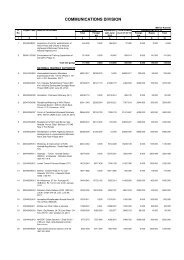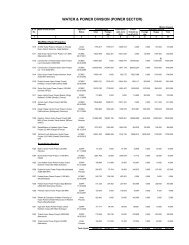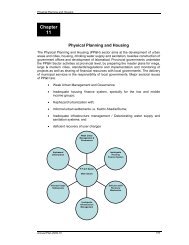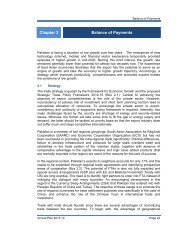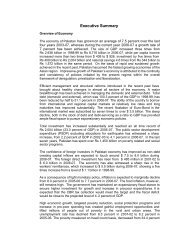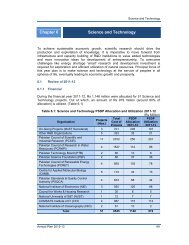Manual for Development Projects - Planning Commission
Manual for Development Projects - Planning Commission
Manual for Development Projects - Planning Commission
Create successful ePaper yourself
Turn your PDF publications into a flip-book with our unique Google optimized e-Paper software.
Chapter-7<br />
PERT / CPM Techniques<br />
7.13 In many situations managers assume the responsibility <strong>for</strong> planning, scheduling and controlling<br />
projects that consist of numerous separate jobs or tasks per<strong>for</strong>med by a variety of<br />
departments/individuals. Often these projects are so large and/or complex that the manager cannot<br />
possibly keep all the in<strong>for</strong>mation pertaining to the plan, schedule and progress of the project in his head.<br />
In these situations, the technique of PERT (Programme Evaluation and Review Technique) and CMP<br />
(Critical path Method) have proved to be extremely valuable in assisting managers in carrying out their<br />
project management activities.<br />
7.14 The US Navy created PERT to plan and control the activities of hundreds of subcontractors who<br />
were building the first US Polarise Missile Submarine. Since many jobs and activities associated with the<br />
Polaris Missile project had never been attempted previously, it was difficult to predict the time to<br />
complete the various jobs or activities. Consequently PERT was developed with the objective of being<br />
able to handle uncertainties in activity completion on time. On the other hand, CPM was developed<br />
primarily <strong>for</strong> scheduling and controlling industrial projects where job or activity times were considered<br />
known.<br />
7.15 In todays usage, the distinction between PERT and CPM as two separate techniques has largely<br />
disappeared. Modern project planning, scheduling and controlling procedures have essentially combined<br />
the features of PERT and CPM so that a distinction between the two techniques is no longer necessary.<br />
For a project having 5 activities/components, a simple PERT/CPM diagram may have the following<br />
shape:-<br />
Be<strong>for</strong>e going into details we should familiarize ourselves with the following terms and symbols:-<br />
i) Network<br />
A systematic diagram showing logical sequences and inter-relationships between events and activities:<br />
ii) Event<br />
The starting point and the ending point of an activity is called an event. Also referred to an "milestone", it<br />
is a statement of accomplished task from there another activity starts. In other words, the starting events<br />
of one activity is actually the ending event of another. This point in time is represented by a circle.<br />
iii) Activity<br />
Page 6 of 26<br />
Actions taken to accomplish a task are called activities. Unlike events which are merely points in time,<br />
http://hd2/pc/popup/ch7_p.html<br />
9/23/2010




